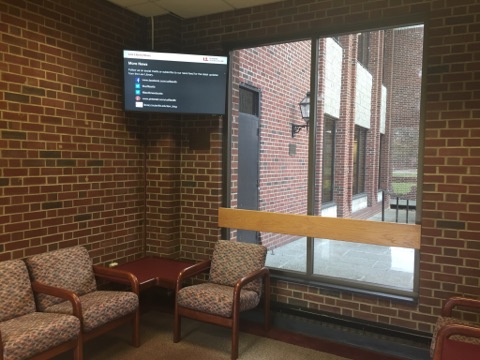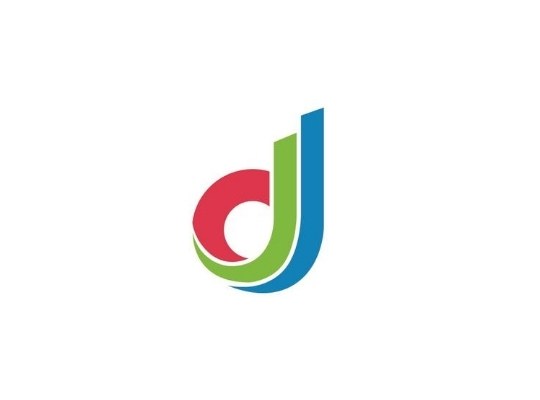Captive audience, emergency messaging spark digital signage growth in higher ed

Higher education is one of the fastest growing sectors in digital signage – a recent study from Russell Reynolds Associates found that 73 percent of educational institutions see digital signage as “crucial” for the future of communication.
Real Digital Media has responded to this growth by creating an entirely new segment devoted specifically to higher education. Spence Graham, who serves as vice chair of the Digital Signage Federation and who spent 15 years operating a digital signage network at West Virginia University, has been hired to lead the company’s new segment. His primary role will be to identify and grow new business opportunities and act as a resource to clients from within the vertical.
Graham said higher education institutions really started paying attention to digital signage after the Virginia Tech shooting happened 2007.
“That’s when people started to realize more was needed in terms of emergency messaging. Campuses tend to be large and sprawling and cover a lot of buildings, so how do you communicate in times of trouble in a big place, where you have a big audience in different places?” Graham said. “You can be very effective alerting people with text and email, under a minute. But with digital signage, you can communicate in under 10 seconds.”
Digital signage is also “in your face,” providing another benefit in a time of crisis.
“I get alerts on my phone all day – emails, texts, news. I choose whether or not to check those right away. I might be busy doing something else and put it off,” Graham said. “But if an alert goes out on a screen in front of you, it’s in your face.”
The key, he said, is proper placement – installing screens in areas with the highest pedestrian counts.
Institutions should also choose the right type of content management system, one that provides an override option for emergency communication. The emergency messaging system Graham is familiar with, for example, had a glaring red background that differentiated that content from standard content.
Still, “99.999 percent of the time, you’re not going to be in emergency messaging mode,” Graham said. However, deploying a network on campus has plenty of other advantages.
“The idea of internal marketing messaging is to build relationships over three or four or five years when those students are there. You want them to fall in love with the university and build that relationship so that it continues when they’re alums and they might be looking for places to donate,” Graham said.
Content
There are a number of best practices to consider when deploying a digital signage network on campus. Most important among them is having the right content for the right audience. Graham said 80 to 90 percent of content should be customized to specific demographics – content playing on a loop in the College of Business should be different from content playing for engineering students across the quad. Content could include a calendar of events, current photos, news, anything unique to that college.
For the other 10 to 20 percent of content in specific schools, general information will suffice, such as weather, arts and entertainment events, athletics, “anything that ties everybody back to being part of the university,” Graham said.
“Having the right content is how you best build those effective relationships,” Graham said. From my experience, the selling point is when you can get a dean or assistant dean or department head to understand the great opportunity they have using digital signage as an internal marketing message platform. Once they realize all they can do with it, they’ll take better ownership in it and even factor it into their future budgets.”
Point person
A point person should be designated to run content and ensure it is updated often. Digital signage content goes stale quickly, Graham said, so a messaging strategy has to be the first priority, prior even to buying any hardware.
“You have to ask what you want to talk about on a regular basis. You can’t just make one design and expect it to last forever,” Graham said.

You don’t have to hire new people for digital signage, you just have to think of it as another communications channel.
He suggests using content that is already being created for other channels, like a website or a print magazine, and empowering designers and content creators to roll digital signage into their job duties.
“You don’t have to be hiring new people to do digital signage, you just have to think of it as another communications channel. Look for existing resources and either re-task or jointly task for digital signage,” Graham said. “It is important to consider that you have to refresh content on a very regular basis.”
You also have to protect your brand, which is why Graham suggests a two-tiered uploading approach – a designer or content producer uploads the content into the CMS, and another person is designated to edit and approve it before it goes live on the network.
Wayfinding and personalization
Aside from sharing college-specific content, digital signage is also effective for wayfinding and recognition efforts on campuses. For wayfinding, it’s important to ensure every detail is updated, especially if there is high employee turnover. There are also multiple approaches to execution, such as searching something by name or by photo.

A screen in a heavy foot traffic area can communicate general information, such as weather and events, and also provide wayfinding around campus.
Digital signage is also effective for recognition initiatives, for example a video wall in the welcome center flashing a student’s name when they arrive for their tour, or a wall of honor listing prestigious alums.
“Deans love (digital screens) because it gets the dated brass plaques off the walls. There’s no continuity to those plaques and they’re ungodly expensive,” Graham said. “A digital screen cleans it up and, not only that, but if this person has done such wonderful things, why would I limit the word count about them? What if they do something else later? You can display information about them six pages deep with a screen and add to it anytime. You can even do a video interview with them. There are so many possibilities.”
Graham said the video wall at WVU flashed students’ names when they were scheduled for a tour and it was a very popular feature; students often took selfies with the screens.
“Talk about making an impression,” he said. “That’s the big takeaway. You’ve got four years to make an impression and create a long-lasting relationship and turn them into fans and donors when they leave. This is an effective investment to do just that. It will become even more effective with each new class, as this demographic is digital native. If you’re trying to future proof your messaging, this is how to start. Where else can you craft such a tight, personal, instant message?”






